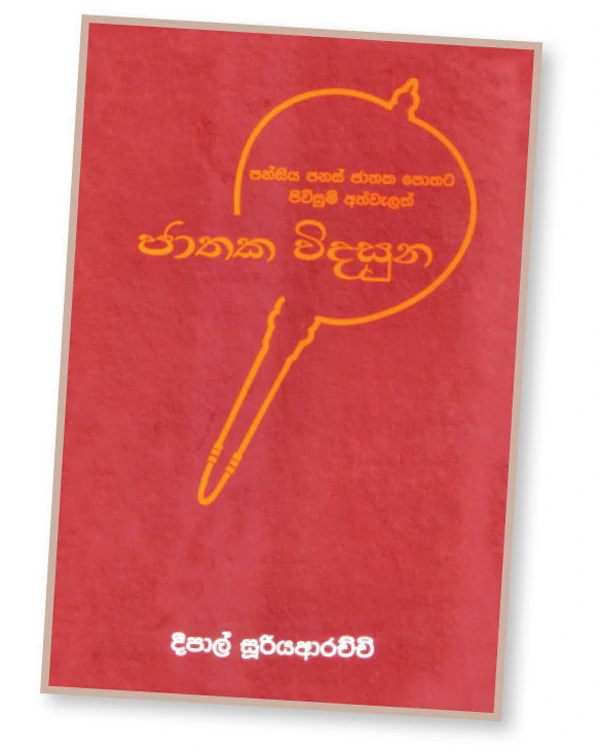
Management consultant, trainer and author Deepal Sooriyaarachchi who often draws inspiration from Buddhist Teachings and Eastern wisdom has attempted to present a novel method to find which Jataka Story suits a given life situation in his latest book Jataka Vidasuna published by Sarasavi. In this book he has provided a key learning from each Jataka Story and given a user friendly index suggesting the most appropriate story for a given life situation grouped under 16 different themes. He also gives the sequential number of the Jataka Story so that one can refer to the full story if needed. “Jathaka Vidasuna” is a handy reference book of 526 Pages with a hard cover.
For centuries, Sri Lankans were shown the path to righteous living with the help of the Jataka Stories. In 
Sinhala language, the term “Vahanse” is used to connote respect and reverence. Hence the terms Swameen 
Vahanse, Bodheen Vahanse. Of all the Buddhist texts, only two books are referred with this term. That is Jataka Poth Wahanse and Piruwana Poth Wahanse. The first being the book containing 547 stories about the previous births of Buddha and the latter, a collection of sutra chanted for protection. It can be argued that the Sri Lankan Buddhists picked these two books to be given such high recognition since one provides guidance for moral good while the other provides protection to the person.
Yet for many years the book containing all the stories was not available to the common man. The Buddhist Cultural Centre of Nedimala published the original version in two volumes and subsequently a simplified version as well. MD Gunasena too had published a complete collection of Jataka Stories in to a very large single volume. However, the sheer size of these volumes discourages the average reader from reading the book.
“Rather than expecting the reader to read the whole book and adopt lessons from them to life, I felt it would be better if there is a way to refer to certain Jataka Stories when an appropriate situation arises. Hence a need for an easy guide to the Jataka Potha,” says Deepal.
“I grouped all the Jataka Stories into 16 themes. Summarised the key learning points of each Jataka Story and indicated what specific situation that Jataka story can be used. Although the key learning point itself can point the person in the right direction, I have given the original number of the 
Jataka Story so that the reader can refer the master volume if needed,” he added further.
The sixteen themes to which the Jataka Stories are grouped are childhood, education and wisdom, love, marriage and parent children relationship, sensual pleasures and desire, personality, virtue, social relationships, business, leadership, governing, worries, elders and looking after them, charity, giving and nature of the world, old age sickness, death and monkhood/qualities of Buddha.
Because of Deepal’s experience and exposure in the world of Management and Business, he perhaps draws more lessons relevant to business executives and modern day individual than a traditional reader of a 
Jataka Stories would do. He admits in the introduction to the book that another person with a different orientation would draw different lessons from the same Jataka Story. For example Psychiatric aspects of Jataka Stories by D V J Harischandra is a comprehensive study of how Jataka Stories can be used in treating psychiatric disorders.






